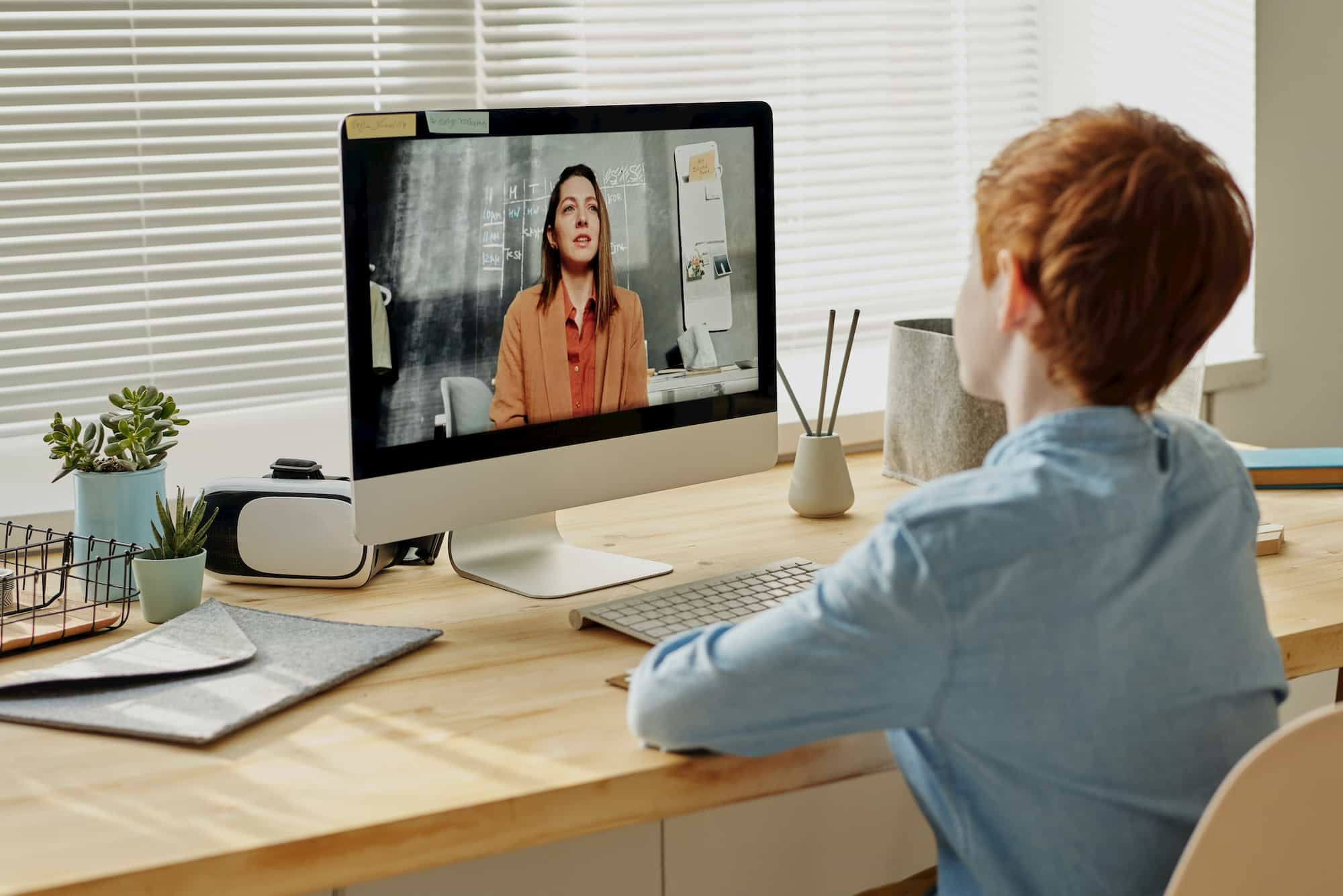With the rising numbers of new COVID 19 infections, the threat for a second wave looms large on our city Toronto, our province, and the country in general. The weather outside is increasingly feeling like fall as we bid goodbye to our days in the sun. This year, most of us couldn’t risk a visit to the beach or a trip to the Niagara Falls, and kids mostly had to make do with online summer camps from the safety of their homes.
Last week, all of us whose kids go to the Toronto District School Board (TDSB) schools, took the final call on whether to send our kids to school or opt for remote learning. No matter what we chose, no matter the considerations behind those choices, we are all extremely anxious about our decision. While we enter the final lap, I thought it relevant to share the challenges of remote learning based on the experiences of parents who have been helping their kids for months. This post is not based on any survey or published report, it is an attempt to acknowledge the real challenges faced by real people. We don’t need another article setting off the alarm bells ringing in our minds, hence, I will also try to share ideas and strategies to cope with the problem.
Parental supervision
My son’s teacher beautifully defined the role parents are playing during the remote learning sessions, he said they were educational assistants (EAs) and the most competent ones at that. Not only are schools opting for remote learning, but also most offices are strongly encouraging their employees to work from home. This creates a unique situation where both parents are working from home and on top of that their child also needs supervision during his online school sessions. The younger the child, the greater is the involvement of the parent. At least one parent has to support the child, putting everything else on hold.

As soon as we know the school routine for the online classes, the parents have to move and rearrange their commitments and meetings as much as possible. Based on the workday routine, either parent can volunteer to support their child. Also based on the level of interest of the child and willingness to participate, we decide on the level of involvement for different topics throughout the day. Hopefully, the varying levels of involvement will yield an opportunity for the parents to tackle their office workload as well.
Shared space
Most of us are living in single bedroom apartments with one or two kids. In a scenario when one of the parents is already working from home, setting up a dedicated area for the school lessons is often a challenge. We can find a table to set up the computer/ laptop but it is exposed to the conundrum of household activities and noisy siblings. Kids have to concentrate on their remote lessons while ignoring the other distractions - crying siblings, mom or dad on an office call, sound of doorbells, television, etc. School is not only a place for learning and development, the classrooms are set up keeping in mind the age of the students and the curriculum. The lucky ones who have a house and kids a separate room, this problem is easily resolved.

We can choose a spot preferred by our child, with adequate natural light (preferably), and set up a small work station for him. It could be just a desk with his stationery, laptop/ computer, and notepad. We could put up a few posters on the walls that surround his desk to make it feel like a cozy comfy study corner. Like our household, if you have a noisy toddler around the house, a good kid’s headphone is a good investment.
Kids lose the sense of routine and structures
Going to school offers a routine for the kids. In the early years, kids thrive on routines. Daily routines give them a sense of security and stability. Young kids understand what is expected of them in the context of daily routines, which makes their environment predictable and secure. This important tool is missing in the virtual learning model.

To cope with this, my friend, a mother of two daughters came up with an innovative solution. She put up a school day routine for both of them on their bedroom wall. It starts with waking up to getting dressed for the Zoom lessons (that’s what is used in most of the Indian schools). I found dressing up for school particularly intriguing. I believe it is one of those finishing touches that we could try to simulate the actual classroom experience. Shoes would be too much though.
The strain of virtual classes
Long hours before the computer screen adversely impacts the eyes. The body posture of the kids is also affected by being confined to a chair and desk. Adequate breaks and off-screen assignments might help reduce the overall strain. Also, young kids find it very difficult to stay put in one place let alone a chair. The role of a parent again becomes indispensable in relieving the kids of these physical discomforts.

I am sure there would be short breaks between lessons. We could teach our kids a few stretching exercises to get their blood flowing. After a Zoom heavy day, most parents are now rationing TV time and taking kids outdoors for a walk. In India, these walks sadly are just restricted to terraces and balconies given the alarming rate of new COVID 19 infections. But here, we are lucky that kids can go out for a walk.
The curriculum of younger kids
Virtual lessons cannot do proper justice to the curriculum of the kindergarten kids as more than academics, the focus is the overall development of the child, his ability to work on assignments, as a part of a group, and peers and teachers play an important role. Working on reading and pre-reading skills will also be a challenge and the sounding of words without face-to-face guidance might not be effective. The kids who are working on their writing skills, often require hand over hand for learning the correct formation of the letters.

Most parents are actively engaged in developing reading skills for our kids. We have to now make it a matter of practice to read books together and use that opportunity to help them sound words and also improve their vocabulary. We could reach out to our teachers to provide an outline of what happened during the class, so that we can bridge the gap between what our kids picked up and what was out of reach for their tiny minds.
Teachers are new to online learning
Teachers with extensive experience in classroom teaching, might not have much exposure to virtual lessons. The strain of teaching the child, through online mediums is likely to impact the quality of discourse. It takes time to develop proficiency in conducting virtual lessons. TDSB provides the following reassurance about supporting the students and educators with proper resources and connectivity.
Due to COVID-19, the Toronto District School Board has implemented remote learning and connectivity opportunities for all students to continue their education from the safety of their own homes. During this difficult time, we are fully committed to providing our educators with the proper supports and resources needed to deliver curriculum and connect virtually with their students.
Source: Remote Learning: Supports and Resources for Educators
YouTube learning channels with short videos often seem to be an obvious choice for parents across borders to supplement remote learning. Their videos use infographics, fun animations, and stock images to make them appealing for the kids. Again, I am sure the YouTubers too would falter if they were given a live audience of a dozen kindergarten kids, some contending for their attention with a flurry of questions, while others quietly shirk away from the spotlight.
Day to day updates on the development of the child
Drop-off and pick-up times were a great time to have a quick chat with the teacher, where any concerns or observations on either the school or home front can be discussed so that all are on the same page. My son took the bus last year, but his class teacher maintained a communication book that was very detailed and up to date. With remote learning, these exchanges also will have go the virtual route unlike a real ongoing dialogue most beneficial to the child.
Technology might come to our rescue in this area as well. We could schedule short meetings with the teachers to discuss the challenges and accomplishments of the child. As is always the case, educators have years of experience and can provide more than one way to deal with a problem or encourage skill development. Parents and teachers have to continue to collaborate through these hard times.
Kids with special needs struggle
Learning for kids with special needs takes place under the steady guidance of a teacher and support of a special needs assistant. Sitting in front of a screen in itself is a challenge for such kids, let alone be able to learn virtually. They need social relationships, an environment that makes them feel safe, and above all the predictability of how their days are gonna look. It is probably for this reason that the government has given special attention to the safe return of kids requiring intensive special educational support.

Meanwhile, we can share all the information about our child with the teacher so that they know what are the areas of development. The Individual Education Plan (IEP) describes special education programs and/or services for a student and it is a common reference document for both parents and teachers.
These are a the problems that were most commonly encountered by parents. There will be many others along the way, where we will improvise and hope for the best outcome. Above all, we must be kind and forgiving, first to our kids for missing out on lessons or homework; and also to ourselves if we falter and are not able to meet the high standards we set for ourselves as parents. Let us learn from our friends back home, and be less critical of the teachers as well. Like us, they too are stepping up for a job they were not adequately trained for or had the time to prepare for.
Every room most likely has a WhatsApp group, where we can all pool in our summary of the day. Help each other out on the discussion points or lessons, we missed out on due to another preoccupation. In-class or remote learning, the kids still belong to the same classroom, and we all belong to the same community. Whether herd immunity will set in or not, let us herd as a community towards the same goal - the mental and physical well being of all our children and school reopening is the first important step in that direction.








